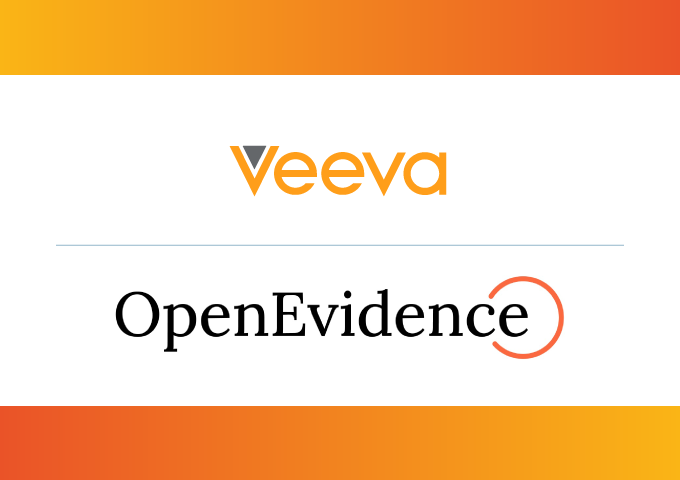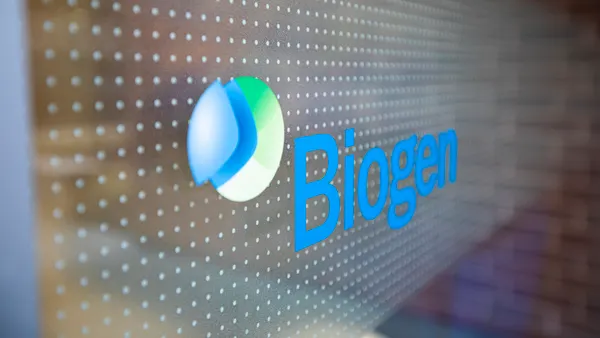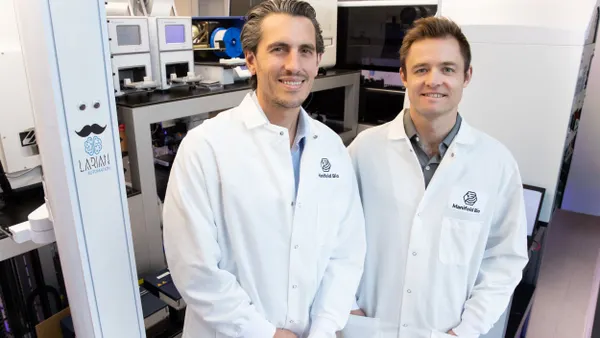PharmaCounsel Legal Counsel: patent management When Form Equals Substance: The Value of Form Screening in Product Life-Cycle Management Pharmaceutical companies need to better manage product life cycles. companies protect their products with a variety of patents, such as composition, method of used, method of manufacture, and formulation patents. A novel product life-cycle management system implemented by conducting a comprehensive salt and polymorph screen of a particular drug can extend pharmaceutical product protection for one to five years. For a product that generates $2 billion in sales per year, such a system can result in $2 billion to $10 billion in additional sales. Without this protection, pharma companies cannot adequately recoup the enormous cost of discovery research, failed product development, and successful product development. This product life-cycle management system also enables second-generation products with improved clinical benefit. A convergence of events negatively affecting drug product life cycle has elevated the value of crystalline form intellectual property (IP) from what was often viewed as peripheral IP to a core asset. Recent events demonstrate that previous piece-meal approaches to crystalline form identification are not sufficient to protect a drug from early competition. Rather, a comprehensive form screen early in clinical development is required for meaningful IP protection. A dichotomy of product life-cycle management is that as pharma companies’ products lose patent protection, generic companies find success. Attacks on patents, regulatory gaming by generics, new FDA rules, and new legislation are shifting the balance in favor of generic competition. In the last decade, generic companies became increasingly more aggressive in targeting brand-name drugs. The patents of wellknown drugs such as Neurontin, Paxil, Fosamax, Hytrin, Zoloft, and Zantac have all come under attack. In each of these cases, crystalline form was at issue. But the challenges to patents for these drugs occurred relatively late in the product life cycle. Of more concern for pharmaceutical companies is that recent patent challenges are occurring early in the product life cycle. Patents of recently launched drugs such as Avandia, Actos, Valtrex, Aricept, Lexapro, Provigil, Aciphex, and Lipitor already are being challenged by generic competitors. Limited Means to Counter Patent Attacks Pharma’s defense to generic competition is confounded by increased limits on the legal and regulatory tools available to counter patent attacks. One of the most common and successful protective mechanisms used by pharma involves the implementation of a 30-month stay as allowed by the Hatch-Waxman Act. Under the Hatch-Waxman Act, if a generic competitor files an ANDA and the pharma company sues the generic company for infringement of a patent listed in the Orange Book, the FDA is then required to delay generic drug approval for 30 months. Previously, if the pharma company obtained another patent that qualified for listing in the Orange Book during this term, it could obtain an additional 30-month stay. The FDA, however, recently passed new rules limiting NDA holders to one 30-month stay per ANDA and tightening the patent listing rules for the Orange Book. Moreover, the recently approved Prescription Drug and Medicare Improvement Act of 2003 limits a pharma company to one 30-month stay and gives generic drug companies the ability to file counter suits to correct improperly listed Orange Book patents. While one 30-month stay on drug approval may seem to provide considerable protection, the reality is different. Generic drug companies typically incorporate one 30-month stay into their product development plans. Thus, a generic competitor will file its ANDA at least 30 months before patent expiration. This anticipation results in the 30-month stay fully overlapping with traditional patent protection. Drugs such as Allegra, Lipitor, Lexapro, Avandia, and Valtrex, for example, have patent protection until at least 2009, but multiple generic drug companies already have filed ANDAs that include a certification (often referred to as a Paragraph IV certification) that the patents are either invalid or not infringed by the generic product. Another mechanism for extending the product life cycle is the pediatric six-month patent-term extension. Under this provision, in return for conducting pediatric clinical trials, a pharma company is granted a 180-day patent-term extension. Recently, however, Congress devalued this extension by passing the Best Pharmaceuticals for Children’s Act. A provision in the act allows generic companies to carve pediatric indications out of their label and thus avoid the patent-term extension in most cases. An additional setback for pharma involves another type of patent extension. The goal of the 1984 Hatch-Waxman Act was to bring generic drugs to market faster while rewarding innovators for new drugs. As a reward for innovation, Congress granted pharmaceutical companies extended patent protection for a pharmaceutical product to make up for the regulatory delay of FDA approval. Essentially, an innovator can add one half of the clinical-trial period and the full time the FDA reviews a completed NDA to the term of a patent. Two limitations to the extension are that an extension period can be no longer than five years and that a patent cannot be extended beyond 14 years from NDA approval. This Hatch-Waxman patent-term extension is heavily relied upon by pharma and typically results in two to five more years of market exclusivity. Defining Two Terms: A Generic Loophole Until recently, most pharma companies believed, perhaps naively so, that the Hatch-Waxman patent-term extension applied to any product containing the active pharmaceutical ingredient (API) and covered by the patent. Thus, if a patent covered a form of the API, such as a particular salt, it was assumed that the patent extension would also cover these different forms. In December 2002, Dr. Reddy’s Laboratories (Reddy’s) successfully challenged this notion for the drug Norvasc in Federal District court. Norvasc (amlodipine besylate) is marketed by Pfizer for the treatment of high blood pressure. Norvasc’s worldwide sales are about $4 billion. Reddy’s filed a 505(b)(2) application, also called a “paper NDA,” to market a different salt of amlodipine, amlodipine maleate. Pfizer’s patent protecting amlodipine was set to expire in 2003. The U.S. Patent and Trademark Office approved a patent extension of 3.4 years. Thus, Pfizer expected patent protection for Norvasc until 2006. The Norvasc case came down to how two terms in the Hatch-Waxman Act – “product” and “active ingredient” – should be defined. The act specifies that the extension applies to the pharmaceutical “product” and defines “product” as the “active ingredient of a new drug … including any salt or ester of the active ingredient…” Reddy’s challenged Pfizer’s notion of what constituted “the active ingredient of the product.” Pfizer contended that the “active ingredient” of Norvasc was amlodipine and that any amlodipine product covered by this patent should also be covered under the patent extension. Pfizer’s extended patent broadly covered any salt of amlodipine, including amlodipine maleate. Reddy’s contended that “active ingredient” means the marketed form amlodipine besylate. Thus, Reddy’s contended that amlodipine maleate is not covered under the patent extension because it is neither the marketed form nor a salt or ester of the marketed form. The court sided with Dr. Reddy’s Labs, concluding that the term “active ingredient” refers to the marketed form of a drug and thus, Dr. Reddy’s amlodipine maleate drug was not covered by the patent extension (see related box on page 57). Thus, Pfizer cannot prevent Dr. Reddy from bringing the maleate salt to market. Rubbing “salt” into the Wound It’s not difficult to make the argument that this case involved gaming on the part of Dr. Reddy’s Laboratories, as the case came down to what is meant by three words in the statute. But in an ironic twist, the generic company, Reddy’s was not the first to make this argument. The first party to make this argument was a pharmaceutical company, GlaxoSmithKline (GSK). GSK successfully argued in a previous precedent-setting case, that “active ingredient” referred to the marketed form, not the active moiety. It was this case that the court relied on in deciding Reddy v. Pfizer. One could therefore make the argument that it was a pharma company, not a generic company, that inadvertently got the branded pharmaceutical industry into this situation. Pfizer is currently appealing its case to the same Appeals court that decided the GSK case. The Solution: A Crystalline Form Screen Most pharma companies are decrying the Reddy’s decision as the end of the Hatch-Waxman patent-term extension and contrary to Congress’ intent when it crafted this provision. The question now is whether anything can be done to regain a meaningful patent-term extension. The real answer is yes. The Hatch-Waxman patent-term extension can still provide meaningful patent-term extension, but it requires affirmative steps to be taken by pharma. The process of building a meaningful patent-term extension begins with a comprehensive crystalline form screen (see related box on page 55). It is true that if an innovator only files patent(s) covering a new chemical entity (NCE) broadly, and the marketed crystalline form of the drug specifically, that a generic company most likely will be able to market an alternative crystalline form during the patent-extension term, assuming the Reddy’s decision is affirmed. There is nothing, however, to stop an innovator from identifying the alternative commercially viable specific crystalline forms of an API through a comprehensive screen, and protecting them with patents. Although only a single patent can be selected for extension under the Hatch-Waxman Act, filing additional crystalline form patents after the core NCE patent will mean that the follow-on form patents will still be in force during the patent-extension term. Even if the extension applies only to the marketed form, as was held in the Norvasc court decision, the additional crystalline form patents running concurrently with the extension will provide the additional exclusivity necessary to prevent alternative bioequivalent forms from entering the market. Importantly, the value of additional crystalline form patents will not end in the event that the Reddy’s decision is overturned. There are several situations where market exclusivity can be legitimately extended or significantly strengthened by crystalline forms identified in a comprehensive screen. One category involves drugs that are not eligible for a patent-term extension because the patent covering the drug has at least 14 years of term remaining after market approval. Drugs in this category include Celebrex, Cozaar, Serevent, and Allegra. For this category of drugs, a comprehensive form screen can enable an innovator to craft a patent portfolio that will function in a fashion similar to the Hatch-Waxman extension. Filing patents on all of the specific commercially viable forms can function collectively as a core patent covering the API in any form. For example, if hypothetically, a patent covering a new compound was filed in 2000, but it did not disclose the preferred form of the drug, the patent protection for this compound would last until 2020. If an innovator filed form patents beginning in 2005 once proof of concept in humans has been established, then all forms of the drug could be covered until 2025 (see related box on page 57). By filing on all the specific commercially viable forms after filing the NCE patent, market exclusivity will run until the first of the form-specific patent expires. Timing is Everything The timing of filing the form patents is important. Although there is some flexibility, there are limits. The Norvasc patent portfolio is an example where a nonmarketed form was filed too early. In this case, the amlodipine maleate salt was disclosed in the core NCE patent. This disclosure resulted in protection for the maleate salt ending at the same time as the NCE. Thus, Pfizer could not protect the amlodipine maleate salt for a length of time equal to its protection of the amlodipine besylate salt. Conversely, Paxil, marketed by GSK, is an example of a drug where the form-specific patent may have been filed too late. Paxil is the tradename for paroxetine HCl. Synthon, a generic pharmaceutical company, filed a patent on paroxetine mesylate, an alternative salt form, and received marketing approval from the FDA. In December of 2003, Synthon and GSK entered into a settlement that allows Synthon to enter the market with its mesylate salt product. The take-home message is that the timing of patent terms requires alternative forms to be filed after the core NCE patent, but before a competitor has an opportunity to do the same screen. The Last Patent Standing A comprehensive form patent strategy also is effective where the last patent to expire covers the marketed form of a drug only. This includes two similar but distinct situations. The first situation is where the form patent is the one chosen for the patent-term extension. Nexium, marketed by AstraZeneca, is an example where a salt patent was chosen for the patent-term extension. When the patent covering a specific crystalline form of the marketed drug is extended, then regardless of the outcome of the Norvasc litigation, the Hatch-Waxman patent extension will not prevent others from seeking to launch a bioequivalent product containing a different form of the same API. In this case, if patents on additional forms were filed after the patent on the extended form, they would have run concurrently with at least part of the extension. The second situation is where the form patent is not extended but is nonetheless the last patent to expire. In this case, patents on additional forms, filed at the same time or after the patent on the marketed from, will expire no earlier than the patent on the marketed form. A comprehensive crystalline form screen is even more important when an innovator wants to rely on a specific polymorph patent for market exclusivity. An example of a drug where the last composition patent to expire covers only a specific polymorph is Lipitor, which is marketed by Pfizer. During the term when the only patent in force is a polymorph patent, the threat of a competitor marketing an alternative polymorph is even greater than the threat of alternative salt form. The reason for this increased threat is a regulatory distinction drawn by the FDA between different polymorphs of the same salt and forms of different salts. In the case where a competitor wants to market an alternative salt of a drug, the competitor must file a NDA or a 505(b)(2), because of the significant difference attributed to different salt forms. An ANDA, a lower regulatory hurdle, is not available for different salt forms of a drug. Perhaps more importantly, different salt forms of drugs filed under 505(b)2 are not automatically substitutable at the pharmacy, (i.e., not AB rated). Competitors must therefore rely on their own marketing and salesforce to successfully market their alternative drug form. A competitor wanting to market an alternative polymorph of a marketed drug on the other hand, need only file an ANDA for market approval. In addition to the lower regulatory hurdle, drugs approved under an ANDA are AB rated, i.e, directly substitutable. An ANDA holder can rely on the brand name company’s marketing and salesforce to promote its drug. They can also rely on the formularies of healthcare plans requiring generic substitution where available. To prevent AB-rated generic competition before the polymorph patent on the marketed form expires, the innovator must file patents on any additional polymorphs that could be developed into an ANDA approvable drug. The timing of filing depends on whether the polymorph patent will be selected for the Hatch-Waxman extension. If the polymorph patent is not selected for the extension, the additional polymorphs can be filed at the same time or later than the marketed drug polymorph patent. If the polymorph patent is extended, the additional polymorph patents must be filed after the marketed polymorph patent so the patents will run concurrently during at least part of the extension. When to Conduct a Polymorph Screen? The timing of a comprehensive form screen is an important factor in taking full advantage of both improving drug development and strengthening IP. A comprehensive form screen should take place either before clinical trials or early in clinical trials to maximize the benefit to drug development and reduce IP risk. A low level of IP risk always exists, even at the time of filing a core NCE patent, because a third party previously could have independently identified and filed patents on the same compound. The first significant increase in IP risk occurs 18 months after the initial core NCE patent is filed, when the patent application is published. At that point, potential competitors could begin synthesizing and identifying different forms of the disclosed drug. For example, Teva Pharmaceuticals filed on a process of making rosuvastatin calcium in 2001. Rosuvastatin is the active moiety of the AstraZeneca anticholesterol drug Crestor (rosuvastatin calcium). Crestor was not launched anywhere before 2002 and was not approved by the FDA until 2003. Teva Pharmaceuticals thus filed on a process of making rosuvastatin calcium well before the drug was launched. A higher level of risk occurs when the patent discloses a known and profitable mechanism of action (such as a new statin drug) because a generic competitor will likely view the drug candidate as having a lower risk than other drug candidates at the same stage in development. Another jump in IP risk occurs upon the release of information relating to a promising late-stage clinical trial, again because of the lowering of commercial risk. For drugs that are not at risk of early third-party interest, a longer patent protection can be attained by waiting until later in clinical trials to conduct comprehensive form studies. The decision, therefore, involves a risk-benefit analysis and sound judgment. What is clear is that the days when a drug was presumed immune from attack until it achieved commercial success are now over. In the End The advent of comprehensive form screening is both an offensive and defensive tool enabling the pharma industry to address these new threats and opportunities. Such approaches provide the opportunity to simultaneously improve drug development and strengthen market exclusivity, but they require proactive and well-considered action on the part of pharma companies. The choice of whether to take advantage of this opportunity is up to pharma. If pharma companies do not make the proactive choice, they can be sure that a generic company will. We should expect a large increase in form patents in the following years. What remains to be seen is whether pharma or the generic drug industry will benefit from them. (The views and ideas from this article represent those of the authors. They do not necessarily represent the views or ideas of TransForm Pharmaceuticals Inc.)F PharmaVoice welcomes comments about this article. E-mail us at [email protected]. John Lucas, Ph.D., J.D., is VP and chief patent counsel of TransForm Pharmaceuticals. Paul Burgess, M.S., J.D., is a patent attorney working at TransForm Pharmaceuticals. Dr. John Lucas The question now is whether anything can be done to regain a meaningful patent-term extension. The real answer is yes. Pfizer’s original API patent was issued in 1986 and expired in 2003. Norvasc was approved by the FDA in 1992. Pfizer had 11 years of patent protected market product sales. The court extended Pfizer’s patent only for the besylate salt until 2006. Thus, all other salts were available for generic drug entry beginning in 2003. In this example, the drug product had market sales of a patent-protected product for more than 14 years. Thus, this drug was not eligible for a patent extension. A form screen covering salts, polymorphs, and co-crystals would function similar to the original API patent and provide patent coverage until 2025. GLOSSARY • An active pharmaceutical ingredient (API) can exist in multiple crystalline forms, such as salts, solvates, cocrystals, free form, and polymorphs. The form of a drug can affect chemical and physical properties such as drug solubility, bioavailability, and stability. • A salt is a free form ionically bonded to an acid and base counter ion. • A solvate is a complex between an API and a solvent wherein molecules of the solvent are incorporated in the crystal lattice. The solvent molecules may be present in either a stoichiometric or nonstoichiometric ratio. • A hydrate is a solvate where the liquid is water. • A cocrystal is a crystal containing an API hydrogen-bonded or bonded by pi-pi stacking to a molecule that is a solid at room temperature. • Free form APIs include free acids, free bases, and zwitterions and are not bound to a second substance. • Polymorphism is the ability of a compound to crystallize in more than one distinct crystal structure. A polymorph is an alternative crystalline structure of a particular form. Polymorphs can exist for salts, solvates, hydrates, free forms, and cocrystals. Pharma’s defense to generic competition is confounded by an increasing limitation on the legal and regulatory tools available to counter patent attacks. Paul burgess
An article from


PharmaCounsel
Filed Under:
Research & Development









